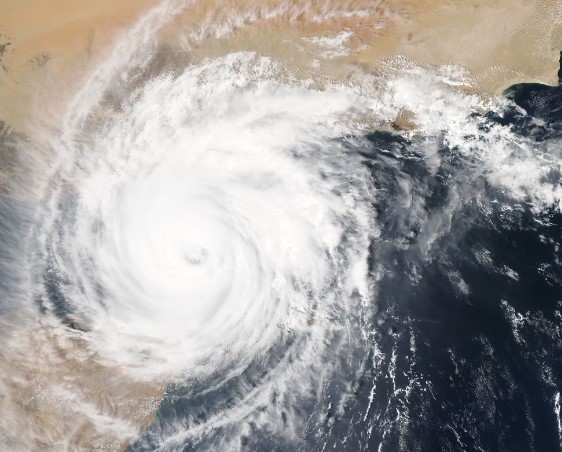Climate change and its related statistics are everywhere. With the planet’s weather patterns shifting, we are unravelling a disastrous and even more dangerous phase of our Mother Earth. Some countries are currently affected by climate change and extreme weather more than others.
Table of Contents
1. China
China, a nation profoundly impacted by the relentless march of climate change, finds itself at a pivotal juncture. Not only is it grappling with the repercussions of this global phenomenon, but it also stands as a prominent contributor to the worldwide surge of greenhouse gas emissions.
China’s densely populated coastal cities are veritable economic powerhouses accounting for a third of its GDP and housing a fifth of its populace. Now, they find themselves in a precarious position. These low-lying urban centers teeter on the precipice of climate-induced crises.
In the year 2019, China, a single entity, was responsible for a staggering 27% of the world’s greenhouse gas emissions. This striking figure surpasses the collective emissions of the entire developed world. Current policies project China’s emissions to plateau at persistently high levels until the year 2030, with a disconcerting 2-5% elevation from previous estimates.
Read more: Heat wave over the Earth’s northern hemisphere: scorching weather over Europe, China and the US
2. United States of America
You would be surprised to know that over the course of a century starting from 1901, the average surface temperature spanning the contiguous 48 states has steadily climbed, boasting a mean rise of 0.17°F per decade.
Beginning in 1970, the United States has undergone a warming of 2.6°F (1.4°C), showcasing the discernible effects of climate change. From 1980 onwards, a staggering climate and weather-related catastrophes have swept the United States, inflicting a collective financial toll exceeding $2.195 trillion.
In the span of 2010 to 2019, the country experienced its most scorching decade in recorded history. These figures serve as a poignant testament to the substantial influence of climate change on the United States.
3. India
India is one of the countries most affected by climate change, with significant effects on its population. It ranked third in countries hit hardest by climate change in 2015.
From 1901 to 2018, temperatures in India rose by 0.7°C. Nevertheless, India emits about 3 gigatonnes (Gt) CO2 annually, India contributes 7% of global emissions with just 17% of the world’s population.
India has been contributing 0.08°C to warming since the 1850s, India ranks fifth among the top 10 contributors to global temperature rise. This has aggravated health issues, particularly malnutrition and related disorders, disproportionately affecting the impoverished.
4. Bangladesh
Climate change is also taking a toll on Bangladesh, a nation grappling with its effects. Despite its low contribution to global greenhouse gas emissions, the country faces profound challenges.
It ranked seventh among the most climate-vulnerable nations and confronts a multitude of climate-related disasters. Forecasts indicate that climate change could displace one in seven Bangladeshis by 2050. Rising sea levels might force up to 18 million people to migrate.
Accounting for just 0.4 percent of global greenhouse gas emissions, Bangladesh’s per capita CO2 emissions are a mere 0.5 metric tons annually. Swift climate action is imperative to preserve Bangladesh’s growth momentum and tackle climate change repercussions.
5. Afghanistan
Afghanistan Ranks 6th in Germanwatch’s Climate Risk Index and 176th out of 181 in the 2019 ND-GAIN Index, showing its susceptibility to climate impacts. Adding on, Afghanistan’s temperature has risen by 1.8 degrees Celsius since 1950.
Afghanistan’s average temperature rose by 1.8 degrees Celsius since 1950. But, it varies widely by region, from sub zero in mountains to over 35 degrees Celsius in arid areas. Afghanistan’s focus on security leaves it ill-equipped to face climate challenges, worsening its vulnerability.
6. Kenya
You would be surprised to know that Kenya experiences varying annual rainfall, from 250 mm in the north to 2,000 mm in the west. Changing patterns can trigger droughts or floods, affecting farming, water access, and livelihoods.
Despite low global emissions, Kenya’s greenhouse gases rise by 5.63% annually. Tackling emissions is vital to minimize climate impacts. Kenya faces medium vulnerability due to factors like dense populations, agriculture reliance, and limited adaptability.
A survey reveals 97% of Kenyans see climate change affecting daily life. These facts offer a glimpse into Kenya’s climate situation. Urgent adaptation is essential.
7. Pakistan
Pakistan’s susceptibility to climate change makes it one of the most at-risk nations, consistently ranking high on the Climate Risk Index. The nation’s vulnerability is attributed to significant multidimensional poverty rates, though its coping capacity is relatively better.
Despite contributing less than 1% to global greenhouse gas emissions, Pakistan bears a heavy toll from the climate crisis. It witnesses loss of lives and infrastructure due to flooding and extreme weather events.
Pakistan stands as the eighth most vulnerable nation to the climate crisis. In the last two decades, climate-related disasters have caused around 10,000 fatalities and financial losses of approximately $4 billion from 173 extreme weather events. All these statistics pinpoint the severity of climate change in Pakistan.
Read more: Modifying the weather: what is cloud seeding and what are its effects












